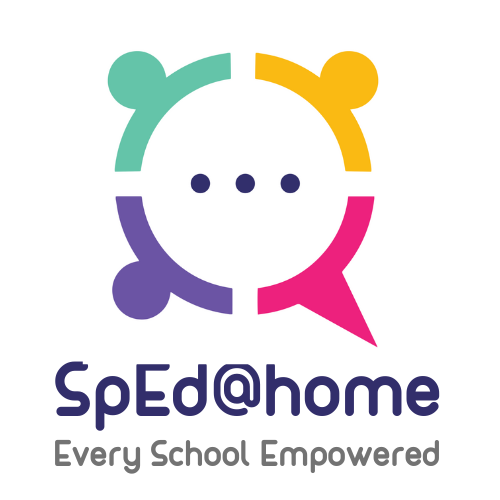Dear Educators, School Administrators, and Concerned Parents,
We are thrilled to invite you to a special Wednesday Webinar that promises to illuminate the intricate world of praise in education. Join us for an engaging session led by Nisha Kumar, a distinguished Counseling Psychologist, as we unravel the mysteries behind effective praise and its profound impact on a student’s development.
In the ever-evolving landscape of education, understanding the nuances of praise dynamics is crucial. Not all praise is created equal, and this webinar is designed to empower you with the knowledge to refine your approach, fostering more meaningful and impactful interactions with your students.
Key Takeaways:
1. Understanding Praise Dynamics:
Dive into the intricacies of praise and discover why not all praise is beneficial. Nisha Kumar will guide you through the subtle nuances of effective praise, shedding light on how certain types of praise can be counterproductive. Gain insights into the psychology of praise and its potential impact on student motivation and self-esteem.
2. Process vs. Person Praise:
Learn to distinguish between “process praise” and “person praise.” Understand the unique impacts each type has on student motivation and growth. Explore how acknowledging a student’s efforts and strategies (process praise) can contribute to a growth mindset, fostering a love for learning and resilience in the face of challenges.
3. Balancing Act:
Striking the right balance between praise and constructive feedback is an art. Gain valuable strategies to maintain this delicate equilibrium. Discover how a thoughtful combination of praise and feedback can significantly support children in their development and learning journey. Nisha Kumar will share practical tips and examples to help you implement these strategies in your daily interactions with students.
This webinar is not just a theoretical exploration but a practical guide to enhancing your teaching toolkit. It’s an opportunity to reflect on your current practices, refine your approach, and adopt evidence-based strategies that align with the latest insights in educational psychology.
Don’t miss out on this enlightening session! Reserve your spot today and embark on a journey towards becoming a more effective and empowering educator. We believe that investing in understanding the intricacies of praise can lead to positive transformations in the classroom, creating an environment where every student can thrive.
We look forward to welcoming you to this insightful Wednesday Webinar and exploring together the transformative power of praise in education.
Dear Educators, School Administrators, and Concerned Parents,
Are you curious about the New Education Policy (NEP) and the National Curriculum Framework (NCF)? Do you want to dive deep into the transformative power of NCF for the Foundational Years of education?
Link to register: Understanding Panchaadi The Five Step Pedagogical Approach
Participation in this webinar is free, for certificate of participation – participants have to pay a fees of Rs. 300/- at the time of registration. Kindly note, post the webinar, participants have to fill in a quick assessment and score a minimum of 75% to obtain the certificate.
The National Curriculum Framework (NCF) is a visionary document that has transformed the landscape of education in India. One of its key highlights is the concept of “Panchaadi,” a five-step pedagogical approach that is both innovative and highly effective.
Join us on our upcoming Wednesday Webinar on with Faridah Bawani – Founder & Director at Chrysaellect Education Solutions.
Here’s what we’ll cover:
An introduction to the NEP and the NCF: Get acquainted with the game-changers in the education landscape. Understand how these policies are shaping the future of learning.
What is special about NCF for Foundational Years: Discover the unique features that set NCF apart and its impact on the crucial formative years of a child’s education.
Understanding the concept of Panchaadi mentioned in the NCF: Delve into the intriguing concept of Panchaadi, a cornerstone of the NCF. Uncover its significance and potential in modern education.
Applying the concept of Panchaadi in curriculum design and classroom teaching: Learn how to implement Panchaadi in crafting effective curriculums and dynamic classroom practices for optimal learning outcomes.
Panchaadi is a holistic approach that not only focuses on academic excellence but also nurtures essential life skills such as critical thinking, creativity, and problem-solving. It empowers students to become lifelong learners who can adapt to an ever-changing world.
By understanding and implementing Panchaadi in education, we can unlock the true potential of our students, creating a brighter future for them and society as a whole. It’s an approach that aligns with the spirit of the NCF, fostering holistic development and empowering the next generation to thrive in an increasingly complex world.
Being a special education teacher is a rewarding yet challenging profession. It requires a unique set of skills and qualities to cater to the diverse needs of students with disabilities. To truly make a positive impact on the lives of these exceptional learners, it is essential for educators to develop effective strategies that promote inclusivity, encourage growth, and facilitate success. This article outlines key principles and practical tips to help aspiring special education teachers become more effective in their roles.
Understanding Individual Needs
The first step towards becoming an effective special education teacher is to develop a deep understanding of individual students’ needs. Each student with a disability is unique, with varying strengths, weaknesses, and learning styles. It is crucial to collaborate with other professionals, such as psychologists, therapists, and parents, to gather comprehensive information about the students’ abilities and challenges. This knowledge will allow teachers to tailor their instructional approaches and create individualized education plans (IEPs) that address specific goals and objectives.
Differentiated Instruction
One of the hallmarks of an effective special education teacher is the ability to employ differentiated instruction techniques. By adapting teaching methods, materials, and assessments, teachers can meet students at their respective developmental levels and learning styles. This approach ensures that every student receives appropriate support, challenging them enough to foster growth without overwhelming them. Utilizing multisensory strategies, incorporating assistive technology, and providing opportunities for hands-on learning can enhance engagement and understanding for students with diverse learning needs.
Creating a Positive Learning Environment
Establishing a positive and inclusive learning environment is vital for the success of special education students. A supportive atmosphere that fosters mutual respect, acceptance, and collaboration promotes emotional well-being and encourages active participation. Special education teachers should strive to create a classroom culture that celebrates diversity and encourages students to embrace their individuality. By implementing behavior management strategies and employing positive reinforcement techniques, teachers can promote positive behavior and mitigate challenges effectively.
Building Strong Relationships
Effective special education teachers understand the importance of building strong relationships with their students, as well as with their families and other professionals involved in their education. By developing rapport, trust, and open lines of communication, teachers can gain insight into students’ lives, interests, and challenges. This knowledge enables them to tailor instruction to individual needs and provide appropriate support. Collaborating with parents, therapists, and other specialists ensures a holistic approach to education, facilitating better outcomes for students with disabilities.
Continuous Professional Development
To be an effective special education teacher, a commitment to continuous professional development is essential. Keeping abreast of the latest research, attending workshops and conferences, and seeking out specialized training opportunities will enhance expertise and knowledge in the field. Engaging in professional learning communities and networking with other special education professionals can provide valuable support, resources, and insights. Staying informed about current legislation and best practices ensures that teachers are equipped to meet the evolving needs of their students effectively.
Becoming an effective special education teacher is a journey that requires dedication, compassion, and a deep understanding of the unique needs of students with disabilities. By embracing individual differences, employing differentiated instruction techniques, and creating a supportive learning environment, educators can unlock the potential of their students and foster their success. Continuous professional development and strong relationships with students, families, and professionals further strengthen the impact of a special education teacher’s work, ultimately making a profound difference in the lives of exceptional learners.
As more and more traditional classrooms are turning into inclusive classrooms, the need for good teacher training modules have never been more pressing. Inclusive education means that all students irrespective of age-group, gender, background, learning abilities/disabilities are engaged equally. To provide better access to education for every student, it is important to provide improved training at teacher’s level.
Here’s how to provide improved access to education with teacher training.
Improved technical expertise
Improved technical expertise is a revision of core concepts as well as learning about new developments. Here, teachers are supported with new trends, new applications, and innovations in terms of concepts in their field. This helps keep them a step ahead of developments related to their field of education. This translates into improved understanding of the subject that leads to better teaching.
A gamut of teaching methods
Improved teacher training makes teachers aware of a host of techniques that help them design inclusive lesson plans for their classrooms. Traditional methods are not enough to meet the educational needs of students with various needs and capabilities. Training tools like audio, video, and illustration helps teachers devise innovative lesson plans which are interesting to all students.
Boosts self-confidence and motivation
Diverse inclusive classroom can be quite a challenge for teachers to teach in. Often, unequipped teachers find it difficult to identify and solve issues born out of learning disabilities. Such incidents affect their self-confidence and motivation. This could lead to loss of interest and unmotivated teaching. Training offers teachers a support system as well as refreshing new ways to bring novelty in everyday teaching.
Teacher training is absolutely essential for inclusive classrooms. It equips teachers with innovative teaching techniques and tools to keep their lessons fresh and interesting. This leads to improved student outcomes and improves access to education for all.
A learning disability diagnosis is a clear indicator that a child may not be able to learn in the same way as other students in the classroom. However, with inclusive education becoming the new norm, teachers are interacting a lot more with children with special needs.
There are several learning disability activity ideas and tools that can help a teacher empower a student with LD to cope in the classroom.
Be specific
When giving an assignment, general statements like ‘do well’ are not helpful for an LD child. Instead, create specific instructions for evaluation parameters. For instance, if it’s a math assignment, be clear on the aspects they will be judged on such as showing the work, writing the formula used etc. Also, post a copy of this on the school website or provide a printout of the instructions that a child (or parent) can refer to later.
Use media to illustrate content
Constant verbal or written instruction may be difficult for a student to follow in the classroom. Supplement your teaching with the use of visual aids such as charts, pictures, videos, graphics etc. Make them colourful, simple and organized. This will help a child with learning disability learn the material while also benefitting the rest of the class.
Break down instructions
Multiple directions at the same time can overwhelm a student with a learning disability. Instead, break down the instructions into simple steps and communicate them one at a time. One strategy that works is having the student repeat the instruction to ensure they have understood it. When it comes to instructions or behaviours that are required recurrently, print them out and put them up in the class. Check in with the student that they understand and remember these instructions.
Most classroom teaching can be adapted to help learning disability students in better understanding the subject matter. In case you are a teacher wondering when it comes to a learning disability, how to help? Make use of these strategies and more available online to improve the overall quality of work in the classroom.
Dysgraphia is described as a learning disorder that affect an individual’s learning abilities. It doesn’t just impact the basic act of writing, but it is where an individual finds it difficult to process a thought and express it in writing. As writing is a mandatory activity in any educational institution, being diagnosed with Dysgraphia can be quite the source of anxiety.
Read on for important symptoms of Dysgraphia that teachers should keep a look out for.
Awkwardly gripping the pen: One of the earliest of Dysgraphia is holding/gripping a pen or crayon in an awkward way. Individuals displaying this sign also tend to avoid activities involving writing or coloring. Since writing is taught to individuals from the early ages of their life, it is important to identify and arrest Dysgraphia as soon as it is noticed.
Writing errors: Children in early schooling years tend to make simple spelling errors. However, Child diagnosed with Dysgraphia experience a severe form of spelling errors along with having almost illegible handwriting. They also have difficulties differentiating between capital and small letters and inconsistent spelling mistakes.
Inability to express intelligence in writing: A major symptom that points towards Dysgraphia is the inability of being able to transfer intelligence when it comes to written performance. This makes it clear that an otherwise intelligent student may be facing difficulties when trying to express themselves in writing.
Teachers are advised to keep a close eye on students to identify the early signs of writing developmental disorder. In case you notice any such student, it is best to refer them to a specialist for an accurate assessment of the same. Spotting it in time and designing a lesson plan that works on this problem area go a long way in helping students cope with Dysgraphia.
To book an assessment, get in touch with Sped@home today. Every Child EnAbled.
As the world recovers from the pandemic, education continues to be digital. The almost overnight transition from classroom learning to online lessons was quite overwhelming for both students as well as teachers. Students who require extra attention have found themselves in a challenging situation and teachers are now in charge of creating online lessons that can keep students engaged throughout the class.
What strategies can teachers imbibe to make classes easy on both parties? Read on to find out-
Engagement is key: Break the monotony of online classrooms with creative engagement ideas through the use of tools like colourful presentations, multimedia, and manual handouts. These can help sustain the students’ interest throughout the class. Another noteworthy technique is to create an environment of discussion instead of lecture focused classes which will allow for more interactive and engaging sessions.
Decorum in the classroom: Whether you are teaching a physical classroom or online one, it is important that it meets all standards of teacher-student decorum to ensure a smooth learning process. Classroom rules and accepted behaviours must be clarified before-hand so that the students can take their classes just as seriously as they did before.
Cluster lessons: Another online teaching technique to help encourage engagement is grouping your lessons into clusters. Creating bite-sized videos or mini-slides to cover similar topics will help students to improve focus in classes and will give the teacher the ability to take shorter sessions with ample number of breaks in between to improve learning outcomes.
There are several tools and strategies that can be used by teachers to engage students in an online classroom. If you are teaching an online course for the first time, research practical tips and tricks undertaken by your peers or find online discussion boards to get a better understanding of global online teaching styles.
Education is an individual’s fundamental civil right.
Education that is inclusive for all has several advantages for students who come diverse backgrounds. However, this concept is idealistic unless teachers consider and practice inclusivity in classrooms.
Students from such a diverse learning spectrum of learning and developmental abilities can be tough to handle in the same classroom. Teachers have experienced that teaching the same material in the stipulated time can be quite difficult.
Explore our teacher training programs
Read on to know the challenges of a teacher in inclusive classrooms.
Training: Including special needs children in traditional classrooms demands that teachers re-evaluate their teaching methods. It has become increasingly important to have a diverse lesson plan that keeps all students in mind. However, most teachers do not have the experience and understanding of how to cater to students with special needs in a classroom. Regular support through teacher training workshops and courses can help manage this issue.
Curriculum extension: Inclusive classrooms should accommodate the needs of all students and include activities that help development of kids from across the learning spectrum. Mandatory subjects can be difficult for children with special needs and trying to make everyone engage with every activity can be quite taxing for teachers.
Modification of lesson plans: When students with learning disabilities are in the same classroom as other kids, it is important to design a lesson plan that isn’t – one fits all. Often, students with ADHD show disruptive tendencies and have trouble keeping up with their peers. Designing suitable lesson plans while maintaining classroom decorum can be quite a challenge for teachers.
Even though inclusive classrooms are the new normal, it is not without challenges. To equip teachers with the resources needed to teach inclusive classrooms, educational institutions and educators should include training programs and workshops in teacher training courses.







